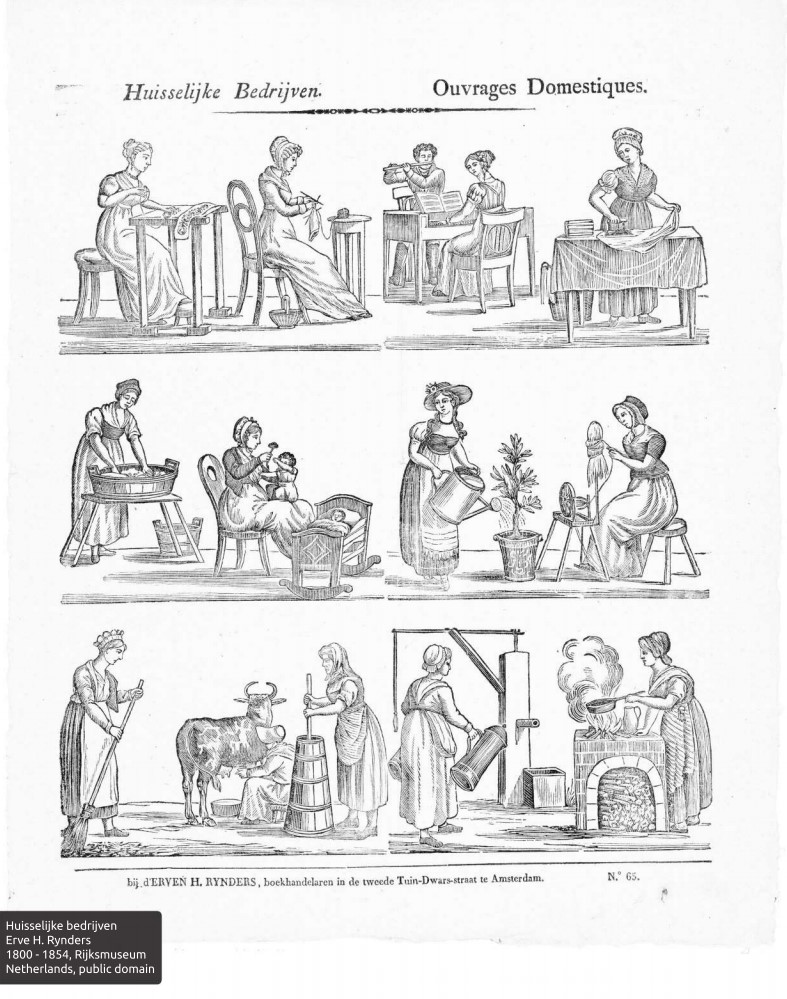This week is pretty special for me as International Women’s Day and the Launch of the ALT Northern Ireland Members Group collide on 8th March, bringing technology, learning, openness and equality together.
I contribute to an online creativity task, the Daily Create (I would highly recommend checking this out) and one recent activity centred on colouring a page from an open source document, the Europeana Coloring Book. My eye was immediately attracted to one of women at work within a domestic setting. The title ‘Ouvrages Domestiques’ translates (via Google) to Household Items so I assume the intention of the pictures was to focus on the tools not the people using them and technological determinism continues to be a problem today.

What struck me most though is that nearly each tool, captured here between 1800 and 1854, remains part of my life, in one form or another, all these years later. I use an iron, stove, floor brush, sewing needle, toy and so on. However, it is transformative newer technologies that mean I live a very, very different life from these women. I have an electric stove so I don’t have to go out and obtain fuel to maintain a fire to cook, I have a washing machine so I don’t have to spend hours heating water over a fire in order to fill a basin to then hand wash each item, I have a vacuum cleaner to speed through the house, my father has a mechanical milking system to enable him to milk a dozen or more cows in the time this woman would have milked one, I buy butter churned mechanically and I buy my clothes online and get them delivered to my door.
Each scene intrigues more every time I look at it; things are so different for me two hundred years later (not least being free of weighty garments) yet every single one features in my life in some form or another. Technology has changed dramatically and I am now freed from domestic work enough to be able to work and earn money doing something I love and find mentally challenging. However, I am not freed entirely, the majority of these chores still need done each day and I use technology to squeeze them into the few hours I have left in the week and to allow some of them to become my hobbies rather than essential to my existence. Thankfully, I am able to share these tasks with my husband, unlike these women. I think though that apart from paid work some of these women were using the technology for that same reason – for fun; musical instruments, embroidery, gardening depicted by women in fancier, elaborate outfits than those doing more laborious work.
Looking to the future for women and technology later in the week I will be thinking a lot about what technology can and can’t change and how we can get distracted by the transformative nature for those of us who are privileged. We have to remain cognisant that technology in and of itself isn’t the answer to equality, that women and those without access to it remain chained to thankless labours and, worse, may even have their jobs threatened by technology. We need to focus on the wins for everyone, rather than for a privileged few, whether in education, healthcare, communities or beyond.
My hope is that in another two hundred years this colouring book will at the very least have a diverse gender and social depiction. Have a wonderful International Women’s Day.
Leave a Reply